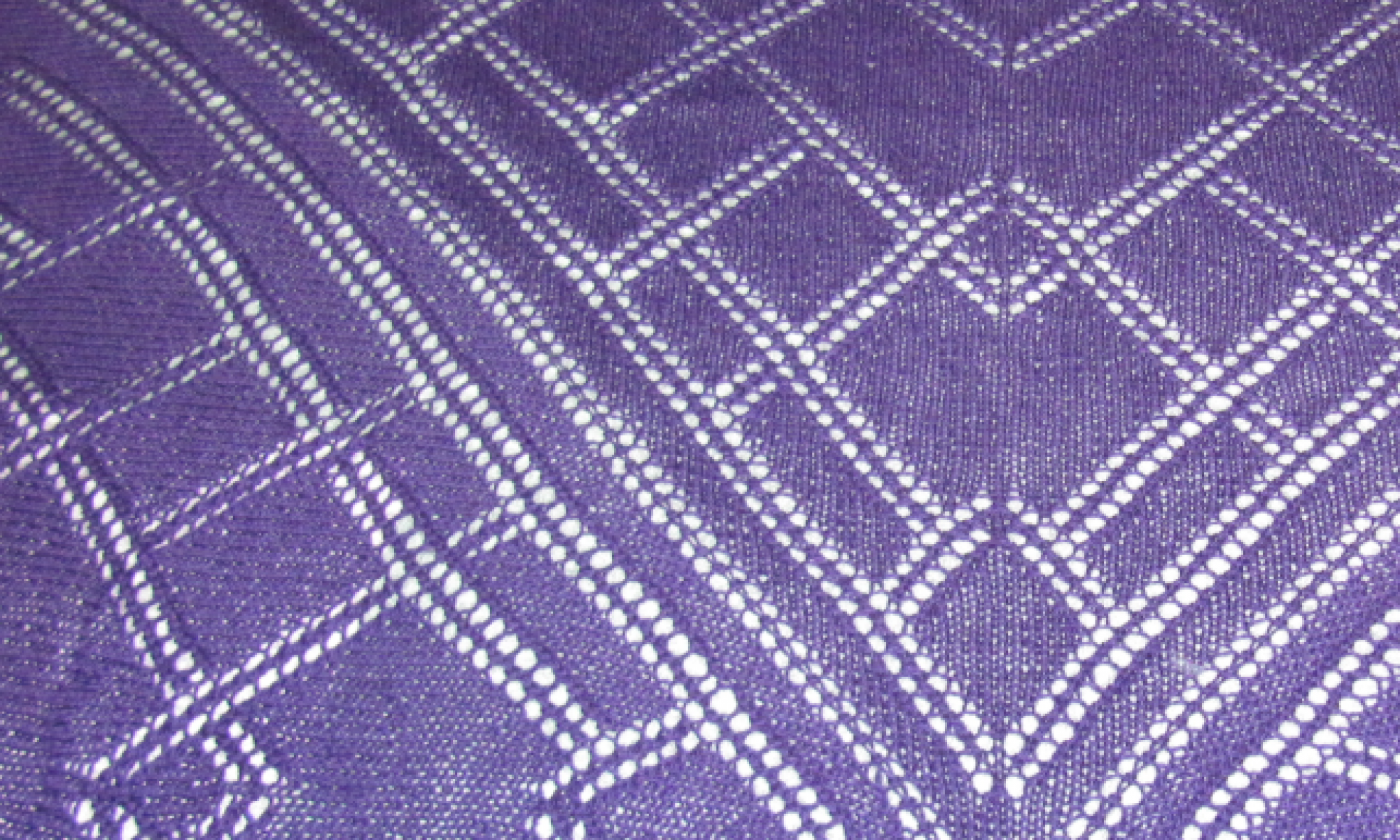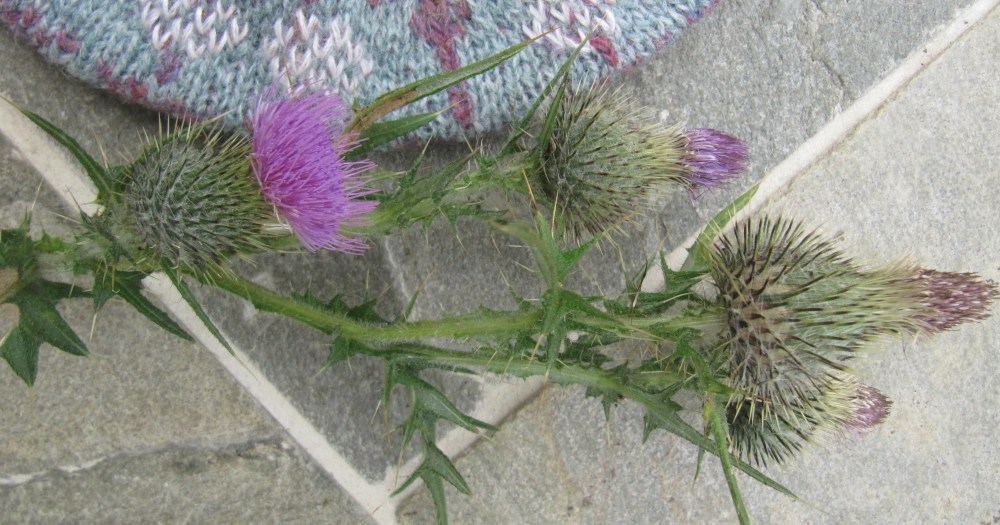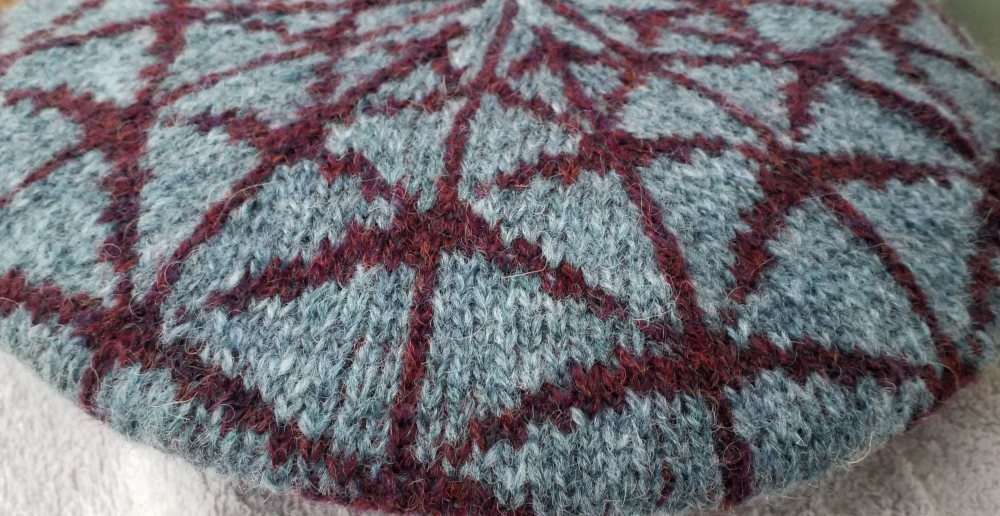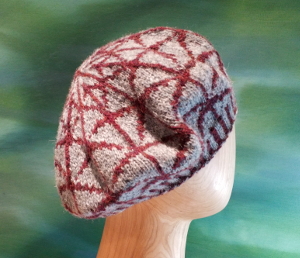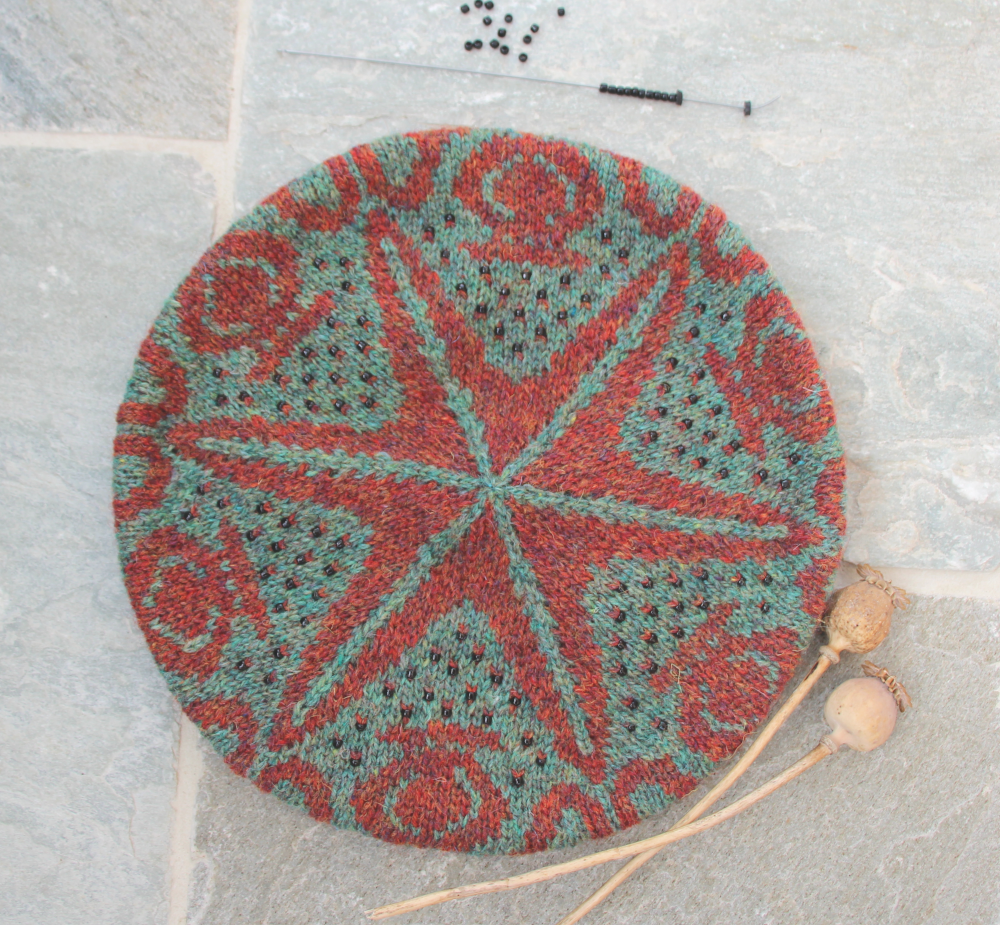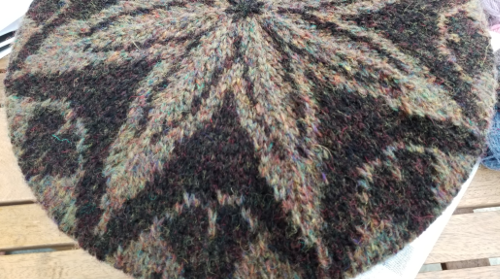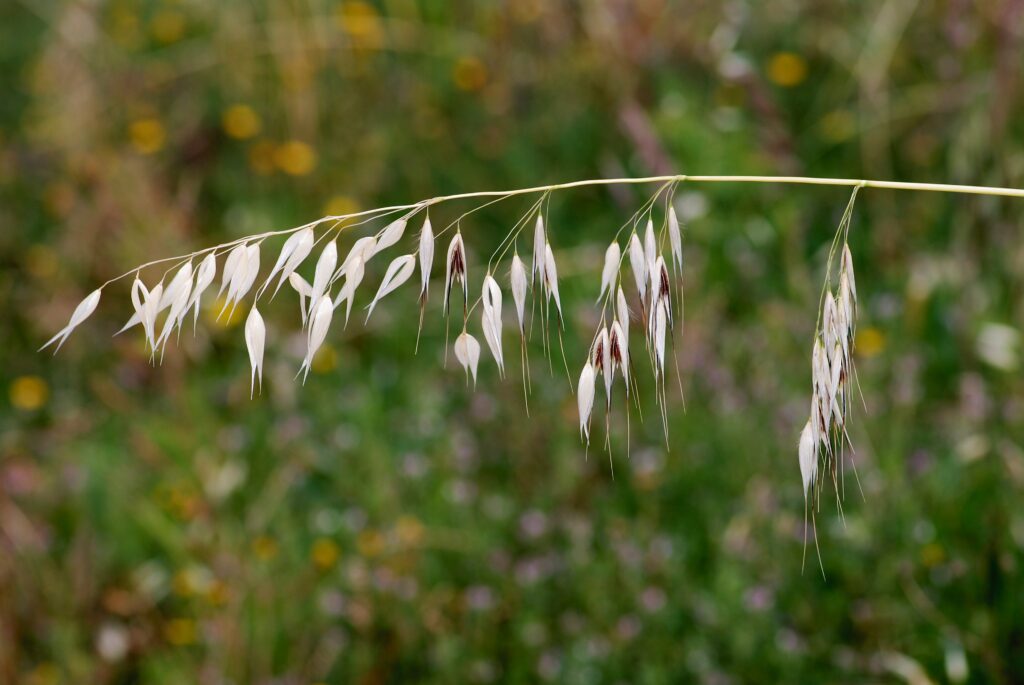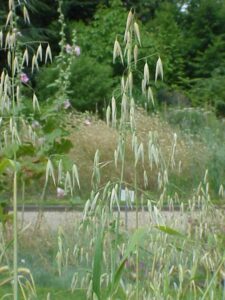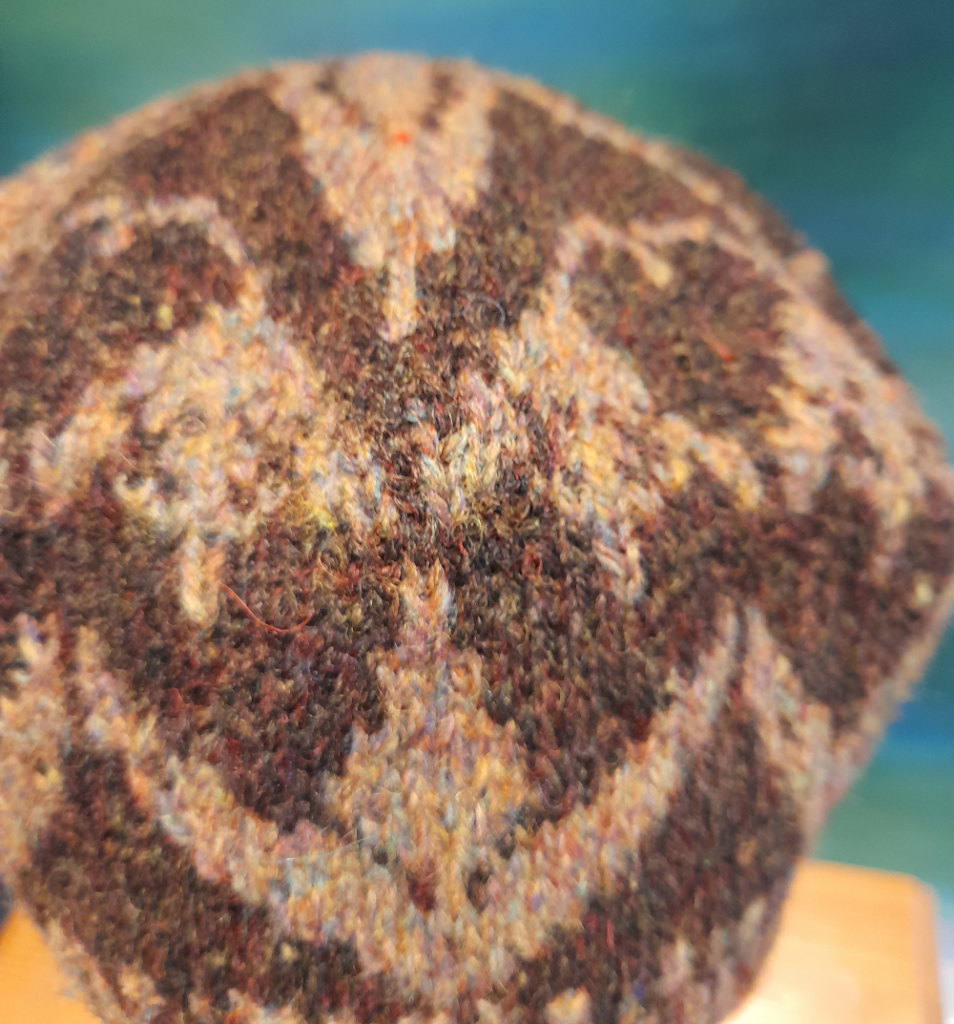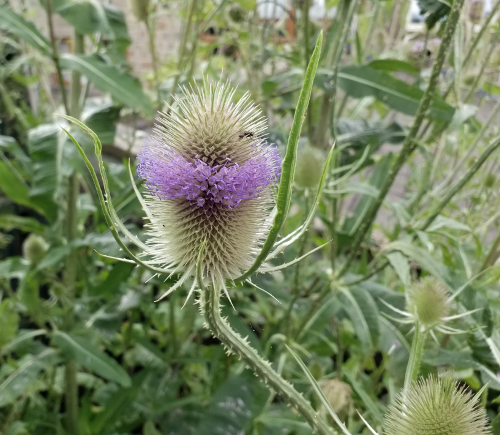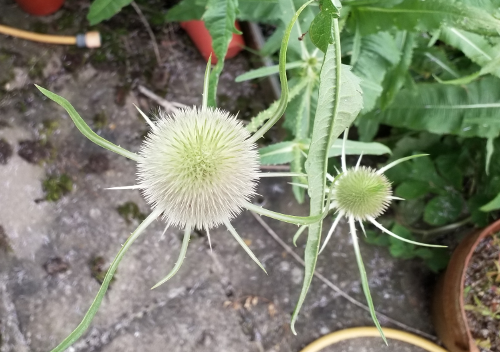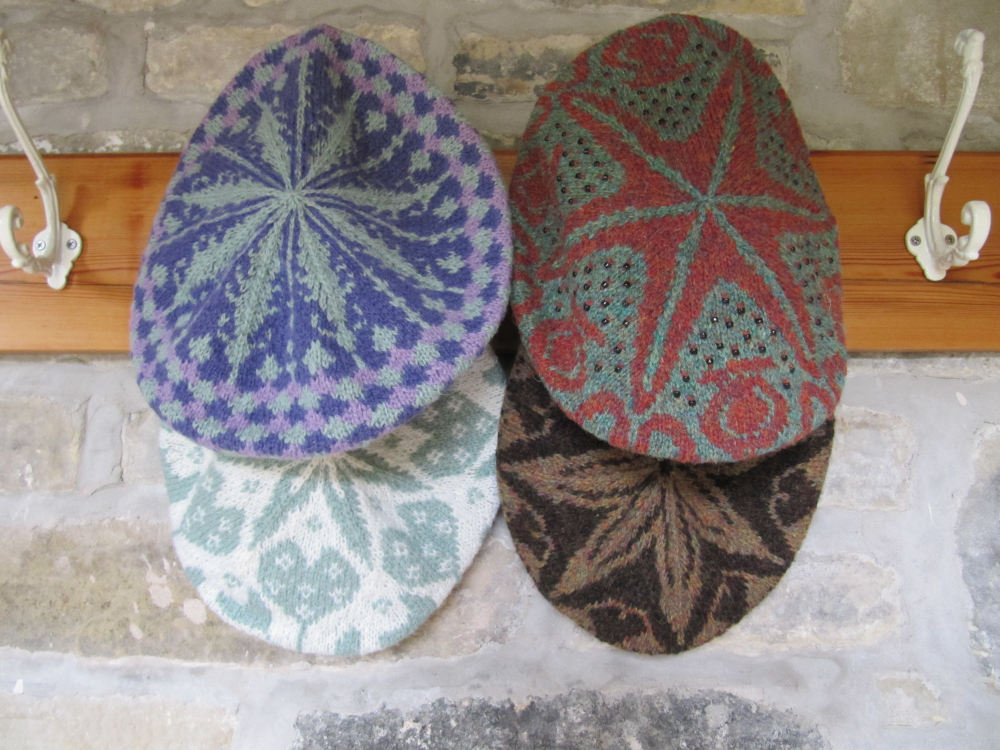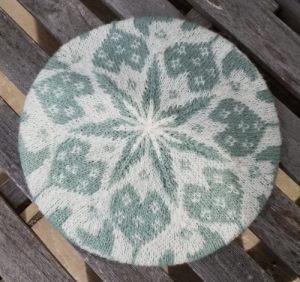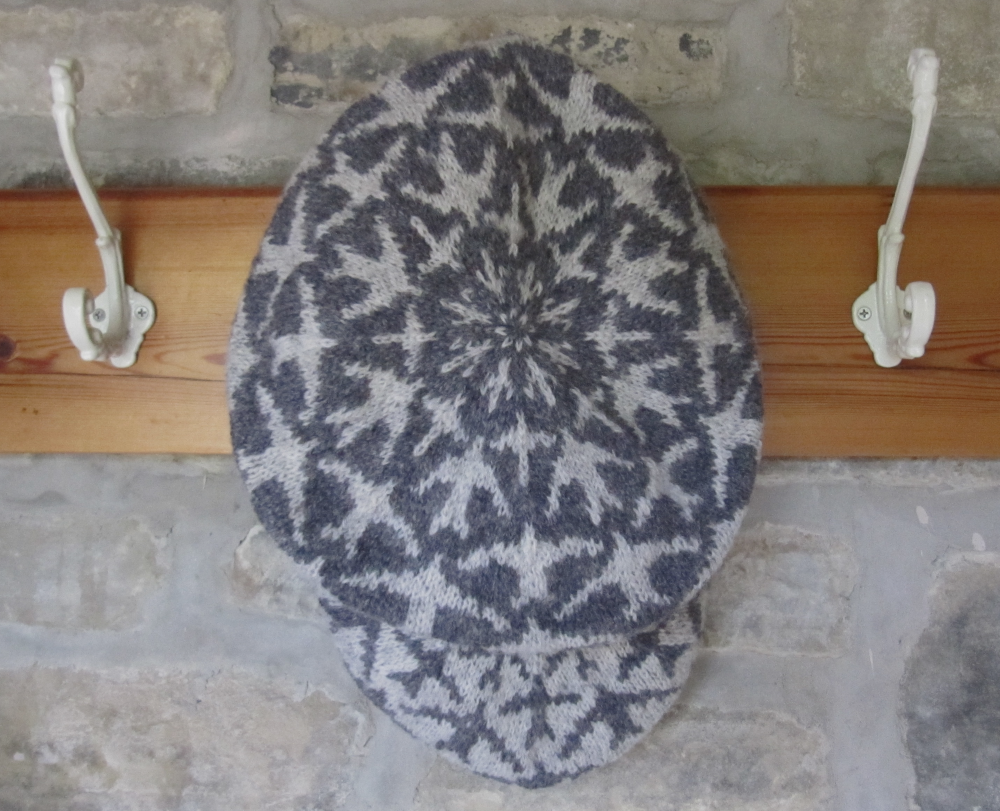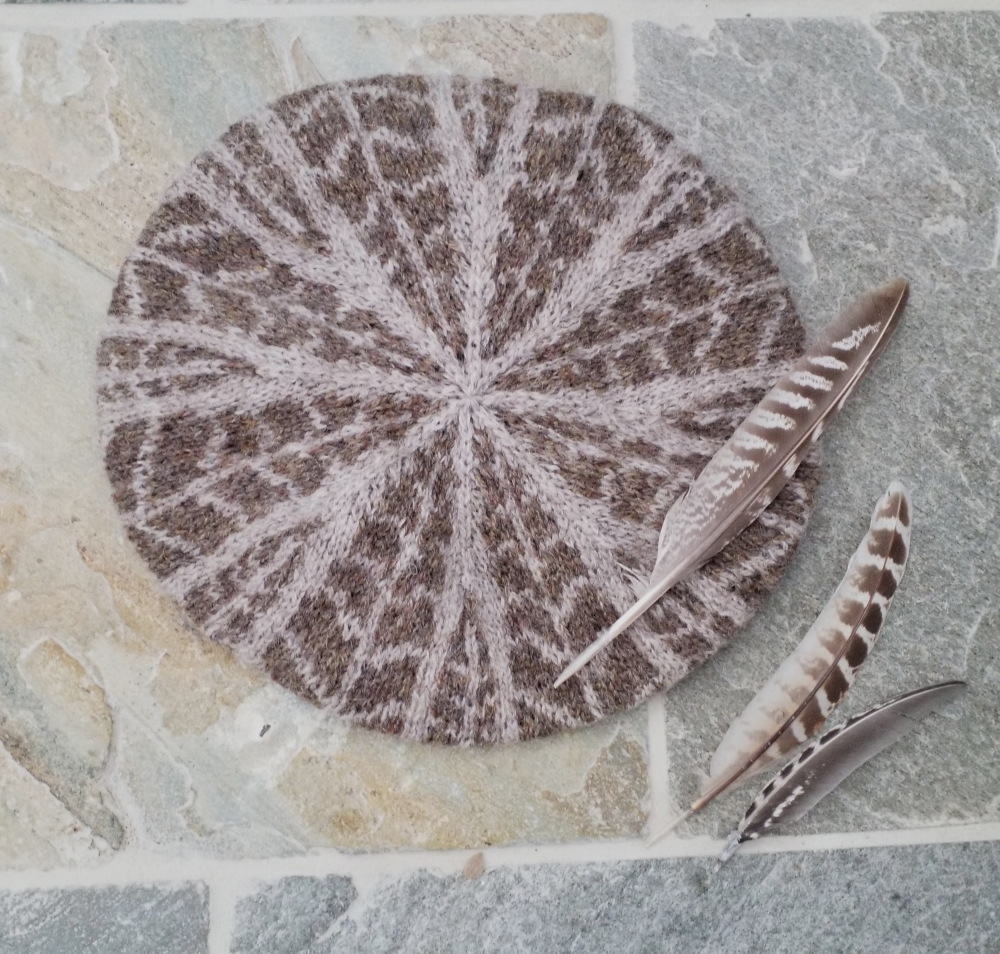This tam pattern is the fifth in a series inspired by the wild flowers commonly referred to as weeds. It features a design based upon the leaves, flowers and seeds of the common thistle. Seen in country verges and on wastelands all over the UK during the summer, thistles add a rich purple to their environment; their nectar feeds bees and butterflies, and their seeds contribute to feeding goldfinches in the autumn.
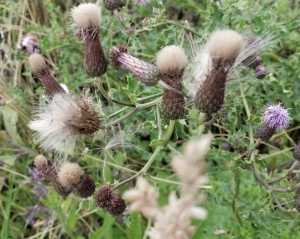
I have drawn inspiration from the prickly leaves, individual seeds with their tuft of white fluff, and the checker board pattern of the flower heads. Instructions are given for four sizes, small, medium narrow, medium wide, or large. The narrow and wide sizes refer to how full the tam part of the hat is. This tam is roomy and warm.
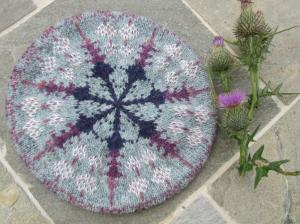
This pattern features Swiss Darning, aka Duplicate Stitch, to achieve the fluffy seed motifs.
Suggested yarns are: Jamieson’s Shetland Spindrift; 4ply; 100% wool; 116 m/ 127 yds per 25 g ball. The sample shown used 2 balls of 274 Green Mist, and less than 1 ball each of 165 Dusk, 617 Lavender, and 567 Damask.
Rowan Kidsilk Haze: lace/2ply; 70% kid mohair, 30% silk; 210 m / 230 yds per 25g / 0.88 oz ball; approx. 30 m / 33 yds in white.
Tools required: A circular needle, 40 cm / 16” (or longer if using magic loop), or a set of dpns, in the following sizes:
2.75 mm [UK/Can size 12, US size 2].
3.25 mm [UK/Can size 10, US size 3].
Stitch markers, at least 1.
Tapestry needle for weaving in ends and Swiss darning.
26 cm/10” or 28 cm / 11” plate for blocking, depending upon the size of hat (optional but highly recommended).
This pattern has been tech edited, but not test knit except by me.
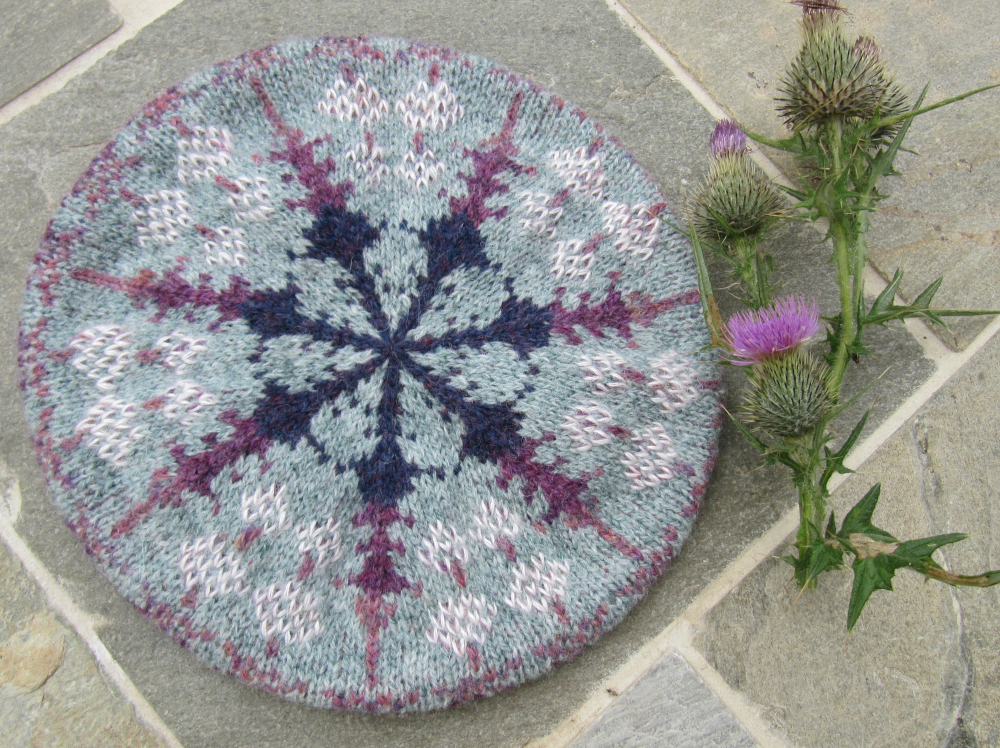
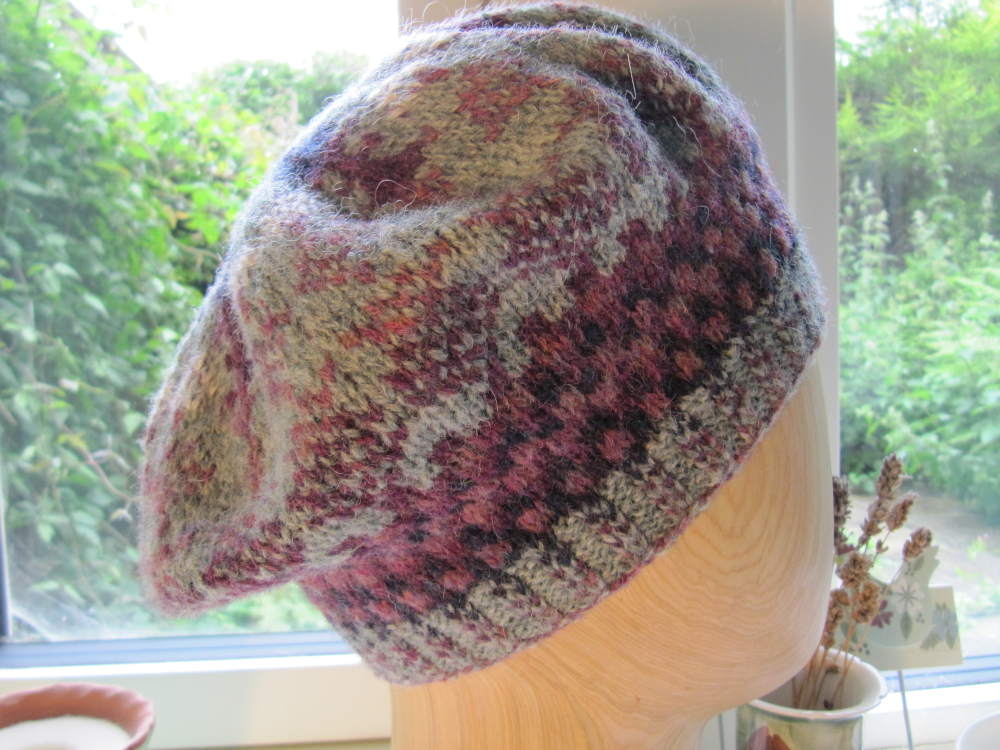
All five of the patterns in the Weeds Collection are available from both Ravelry and Payhip. Other patterns in this collection: Shepherd’s Purse, Teasel, Poppy, Wild Oats
